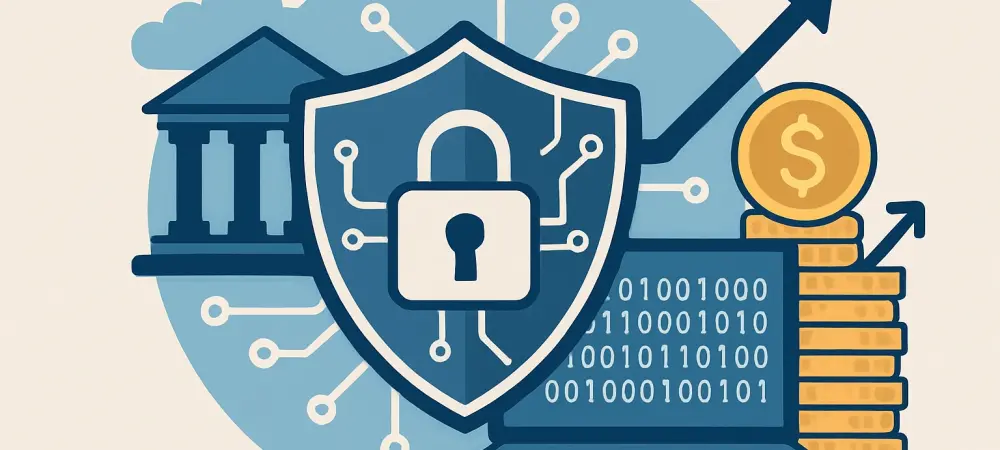In today’s rapidly evolving digital landscape, financial institutions face unprecedented cyber risks, prompting regulators to implement stringent frameworks like the EU’s Digital Operational Resilience Act (DORA). To dive deeper into this critical topic, we’re speaking with a seasoned expert in cyber resilience and enterprise storage solutions for the financial sector. With years of experience helping organizations navigate complex regulatory and security challenges, our guest offers unparalleled insights into how financial entities can safeguard their operations and meet compliance demands in this high-stakes environment.
Can you give us a broad picture of what DORA entails and why it’s become such a pivotal regulation for financial institutions?
Absolutely. DORA, or the Digital Operational Resilience Act, is a comprehensive regulatory framework introduced by the EU to strengthen the digital defenses of financial institutions. It focuses on ensuring that banks, insurance providers, investment firms, and other critical players can withstand and recover from cyber threats and operational disruptions. Its importance lies in the growing reliance on digital systems in finance—where a single breach can have cascading effects on markets and consumer trust. Regulators recognized that existing measures weren’t enough to address the sophisticated cyberattacks we’re seeing today, especially with the interconnected nature of financial ecosystems. That’s why DORA was rolled out with such urgency, effective since January 2025, to set a new standard for resilience.
What kinds of consequences might financial organizations face if they don’t meet DORA’s compliance standards?
The stakes are incredibly high for non-compliance. Financial entities could be hit with fines as severe as 2% of their annual worldwide turnover or 1% of their average daily turnover, which can translate to millions or even billions for larger institutions. But the damage doesn’t stop at financial penalties. Failing to comply can tarnish a company’s reputation, eroding customer trust and investor confidence. Operationally, it could mean increased scrutiny from regulators, potential business restrictions, and even personal liability for senior executives. In a sector where trust is currency, these impacts can be devastating.
Why do you think this moment is so crucial for financial enterprises to prioritize DORA compliance?
We’re at a tipping point right now. While there haven’t been public fines for DORA violations yet, enforcement authorities have already started conducting dry runs and issuing warnings about compliance gaps. This leniency won’t last long. With the regulation already in effect, I anticipate stricter enforcement and penalties to start rolling out soon. Financial institutions that haven’t acted yet are playing with fire—waiting for a fine or a breach to force their hand isn’t a strategy. Acting now isn’t just about avoiding penalties; it’s about building a resilient foundation before a crisis hits.
How does DORA specifically tackle the issue of cyber resilience for financial institutions?
DORA places cyber resilience at the core of its requirements. It mandates a proactive approach, requiring institutions to implement robust risk management practices, including real-time monitoring, incident reporting within tight timelines, and regular resilience testing. A key focus is on rapid recovery—DORA emphasizes that firms must be able to restore operations swiftly after a cyber incident to minimize disruption. This means having solid backup policies, secure data storage, and recovery mechanisms in place to ensure business continuity, no matter the scale of the attack.
Can you elaborate on the role third-party providers play in the cyber risks faced by financial institutions under DORA?
Third-party providers, especially those handling ICT services, are a significant vulnerability for financial institutions. The reliance on these external partners for critical operations like cloud storage or payment processing creates potential entry points for cyberattacks. A breach at a third-party level can ripple through to the financial entity, disrupting operations and exposing sensitive data. DORA addresses this by requiring rigorous oversight of these relationships—firms must ensure their providers meet strict security standards, conduct regular audits, and have contingency plans in place to manage third-party risks effectively.
How can advanced enterprise storage solutions help financial institutions align with DORA’s cyber resilience mandates?
Enterprise storage solutions are a game-changer for DORA compliance. They provide the backbone for data integrity and rapid recovery, which are central to the regulation. For instance, features like immutable snapshots ensure that data can’t be altered or deleted by attackers, offering a clean restore point after an incident. Logical air gapping adds another layer of protection by isolating critical data. These technologies directly support DORA’s requirements for secure backups and quick recovery, helping institutions maintain operational continuity even under attack.
Could you walk us through how a secure forensic environment aids in recovery after a cyberattack?
Certainly. A fenced forensic environment is essentially a secure, isolated space where teams can analyze data post-attack without risking further contamination. It allows you to examine immutable snapshots to identify a clean, unaffected copy of your data for recovery. This speeds up the process significantly because you’re not guessing which data is safe to restore. By ensuring that only clean data is brought back into primary systems, it prevents reintroducing malware or ransomware into the environment, aligning perfectly with DORA’s focus on swift and secure recovery.
What’s your forecast for the future of cyber resilience regulations like DORA in the financial sector?
I believe we’re just at the beginning of a global wave of tighter cyber resilience regulations. DORA is setting a precedent in the EU, and with frameworks like the UK’s upcoming Cyber Security Bill on the horizon, we’ll see even more stringent rules around incident reporting and operational continuity. As cyber threats continue to evolve, I expect regulators to push for greater integration of advanced technologies in compliance strategies, with a heavier emphasis on proactive threat detection and automated responses. Financial institutions that invest in future-proof solutions now will not only meet today’s standards but also stay ahead of tomorrow’s challenges.

